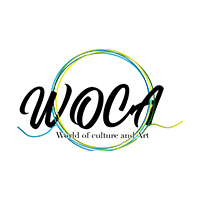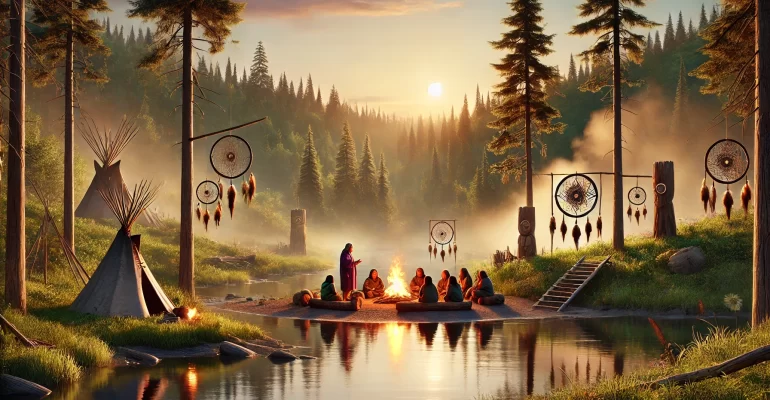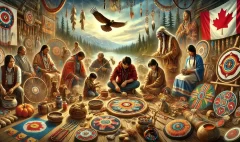Nature’s Wisdom: Exploring Indigenous Traditional Knowledge Systems in Canada
Nature’s Wisdom: Exploring Indigenous Traditional Knowledge Systems in Canada
Hello, curious minds and knowledge seekers! Are you ready for an amazing journey into the world of Indigenous Traditional Knowledge? It’s like we’re about to open a treasure chest filled with wisdom about nature, health, and the stars – all from the Indigenous Peoples of Canada. This knowledge has been passed down for thousands of years and is super important for taking care of our planet and ourselves. So, let’s dive in and discover these incredible ways of knowing!
What Are Indigenous Traditional Knowledge Systems?
Imagine having a huge library, but instead of books, the knowledge is stored in stories, songs, dances, and the land itself. That’s what Indigenous Traditional Knowledge Systems are like! They’re ways of understanding the world that Indigenous Peoples have developed over many, many generations.
“Our knowledge comes from careful observation of the world around us,” explains Elder Mary Skywatcher of the Anishinaabe Nation. “We’ve been studying the land, plants, animals, and stars for thousands of years. This knowledge helps us live in balance with nature.”
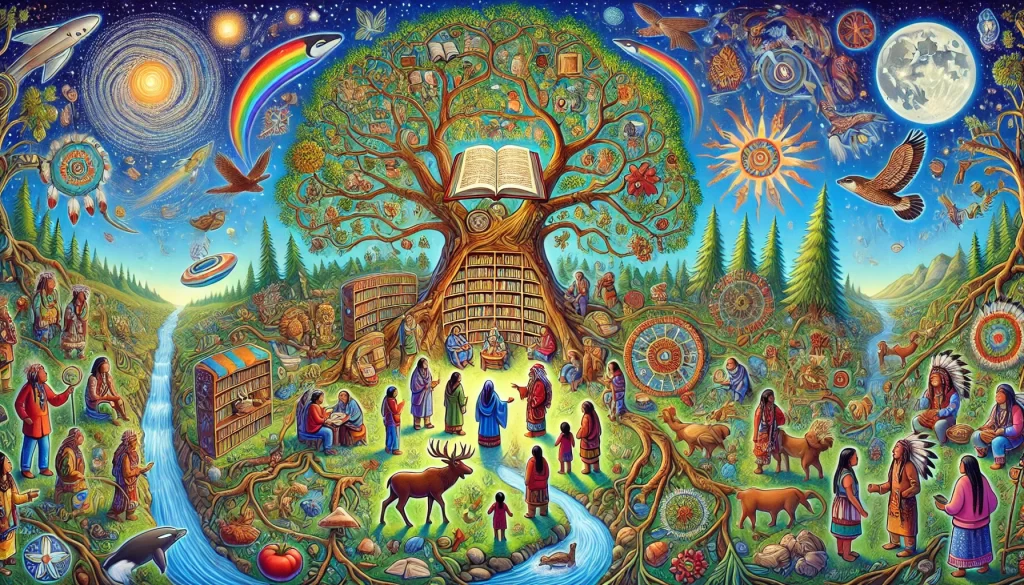
Key Features of Indigenous Knowledge Systems:
- Holistic: Everything is connected – people, nature, and the spirit world.
- Oral tradition: Knowledge is often passed down through stories and teachings.
- Practical: The knowledge is used in everyday life, not just theory.
- Spiritual: Many teachings have a spiritual aspect, recognizing the sacredness of nature.
- Adaptive: The knowledge changes and grows as the world changes.
“Our traditional knowledge isn’t stuck in the past,” says Jamie Thundervoice, a young Cree scientist. “It’s always growing and changing, just like the world around us. We’re adding new understandings to our old wisdom all the time!”
Medicine from the Land: Indigenous Health Knowledge
Indigenous Peoples have amazing knowledge about how to use plants and other natural things for healing. It’s like having a pharmacy in the forest!
[Image description: A collage of medicinal plants with labels, and images of people gathering and preparing natural medicines.]
Here are some cool things about Indigenous medicine:
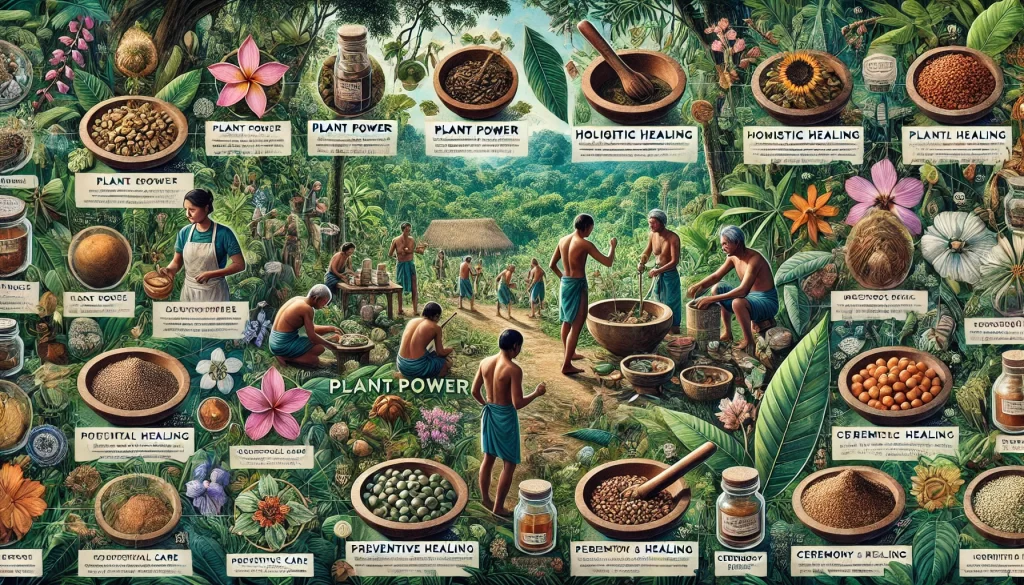
- Plant power: Many Indigenous nations know hundreds of plants that can be used for medicine.
- Holistic healing: Traditional medicine often treats the whole person – body, mind, and spirit – not just the symptoms.
- Preventive care: Many practices are about staying healthy, not just treating sickness.
- Ceremony and healing: Some healing practices include ceremonies to connect with spiritual helpers.
“Our medicines don’t just come in bottles,” explains Lisa Bearwoman, an Indigenous health practitioner. “They’re in the plants around us, in our ceremonies, and in our connection to the land. Healing is about bringing ourselves back into balance with all of creation.”
Fun fact: Many modern medicines come from plants that Indigenous Peoples have used for centuries. For example, aspirin originally came from willow bark, which many Indigenous groups used for pain relief!
Star Stories: Indigenous Astronomy
Look up at the night sky. What do you see? Indigenous Peoples see stories, calendars, and guides written in the stars!
Indigenous astronomy is super cool because:
- Constellations have stories: Many star patterns tell important cultural stories.
- Stars as calendars: The positions of stars help track seasons and know when to plant crops or move to hunting grounds.
- Navigation guides: Stars help with finding directions when traveling.
- Ceremony timing: Some ceremonies are timed with certain star positions.
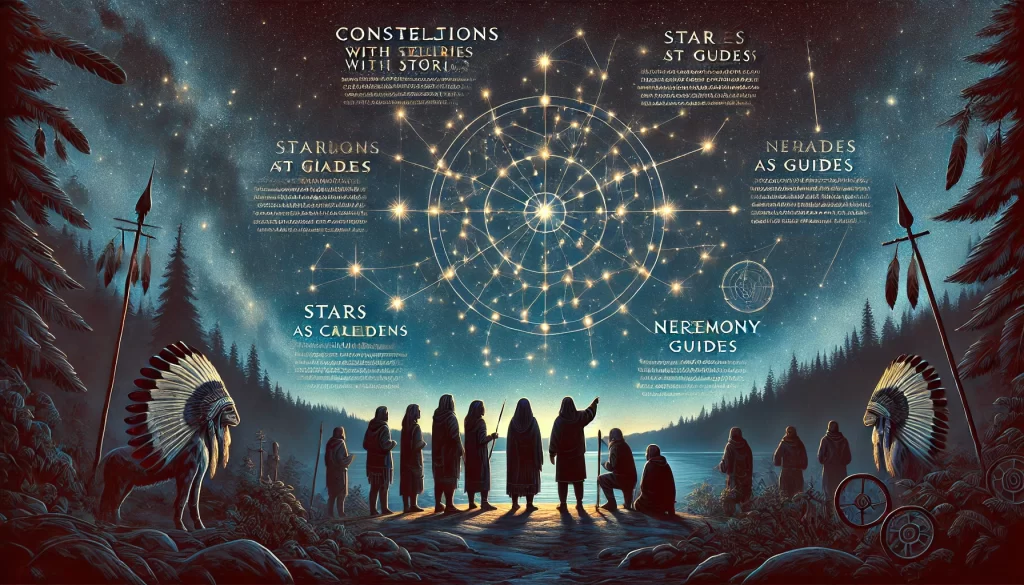
“The stars are like our ancestors watching over us,” says Elder Tom Skydancer. “They remind us of our teachings and help guide us through the year. When we look at the stars, we’re connecting with thousands of years of knowledge.”
Did you know?
The Pleiades star cluster is important in many Indigenous cultures. Some call it the “Seven Sisters” and use its appearance to mark the beginning of winter!
Environmental Wisdom: Living with the Land
Indigenous Peoples have super smart ways of taking care of the environment. It’s like they have a guidebook for living in harmony with nature! Here are some amazing parts of Indigenous environmental knowledge:
- Sustainable harvesting: Knowing how to take only what’s needed and leave enough for plants and animals to regrow.
- Fire management: Using controlled burns to keep forests healthy and prevent big wildfires.
- Water care: Understanding how to keep water clean and plentiful.
- Animal relations: Knowing animal behaviors and how to hunt or fish without wasting or over-harvesting.
- Weather prediction: Reading natural signs to forecast weather.
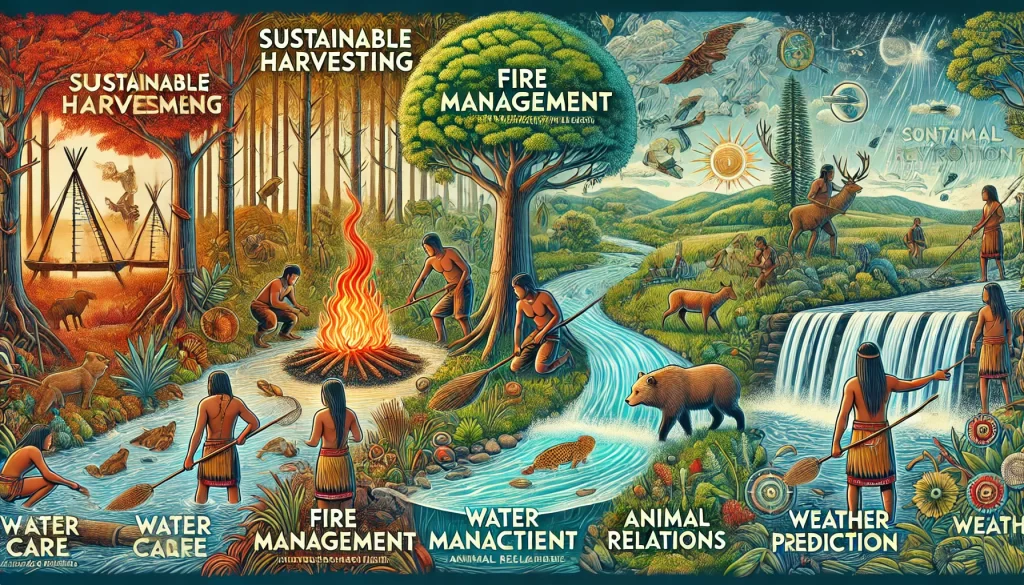
“We see ourselves as part of nature, not separate from it,” explains Mike Riverwatcher, an Indigenous environmental scientist. “Our traditional practices are all about keeping balance. When the land is healthy, we’re healthy too.”
Cool example:
Some Indigenous groups in British Columbia traditionally harvested tree bark for making clothes and baskets. They knew exactly how to take the bark without hurting the tree, so it could heal and keep growing!
Blending Old and New: Indigenous Knowledge in Today’s World
Indigenous Traditional Knowledge isn’t just about the past – it’s super important for solving today’s problems too! Here are some exciting ways Indigenous knowledge is being used today:
- Climate change solutions: Traditional knowledge about adapting to changing environments is helping in climate change research.
- Conservation: Indigenous land management practices are being used in national parks and protected areas.
- Sustainable agriculture: Traditional farming methods are inspiring new ways of growing food without harming the earth.
- New medicines: Scientists are working with Indigenous healers to find new medicines from traditional plant knowledge.
- Disaster prevention: Indigenous knowledge about lands and waters is helping predict and prevent natural disasters.
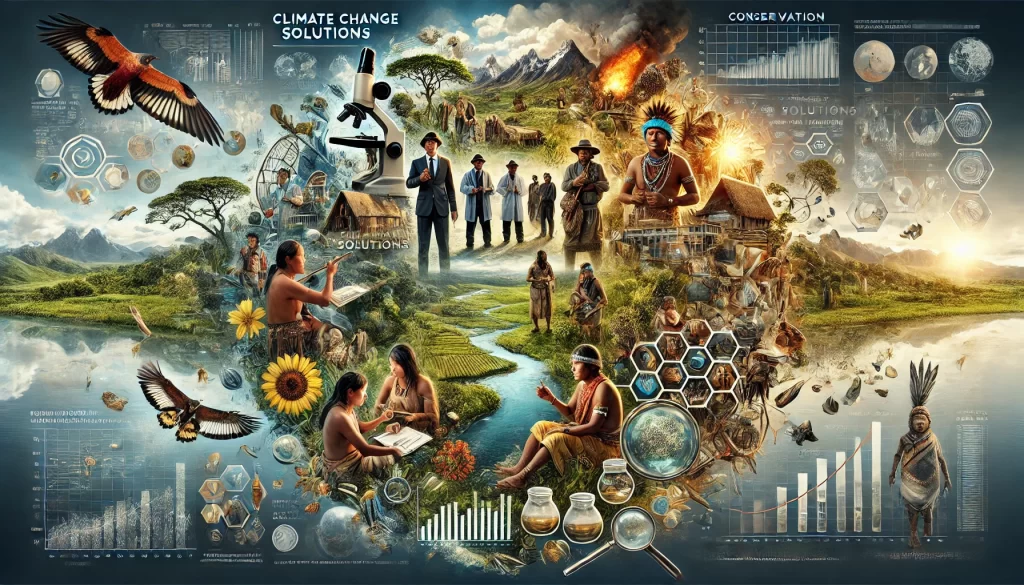
“By bringing together our traditional knowledge and modern science, we’re finding better ways to solve big problems,” says Dr. Sarah Eagleheart, an Indigenous biologist. “It’s like having two different maps of the same place – together, they give us a much clearer picture!”
Learning and Sharing: Keeping Traditional Knowledge Alive
Keeping Indigenous Traditional Knowledge strong is super important, but it can be challenging in today’s world. Here’s how people are working to keep this wisdom alive:
- Elder-youth programs: Young people spend time with elders to learn traditional knowledge.
- Land-based education: Schools that teach traditional knowledge out on the land.
- Digital archives: Using computers and the internet to record and share knowledge in new ways.
- Indigenous-led research: Indigenous scientists and communities leading research projects that include traditional knowledge.
- Cultural camps: Special camps where people can go to learn traditional skills and knowledge.
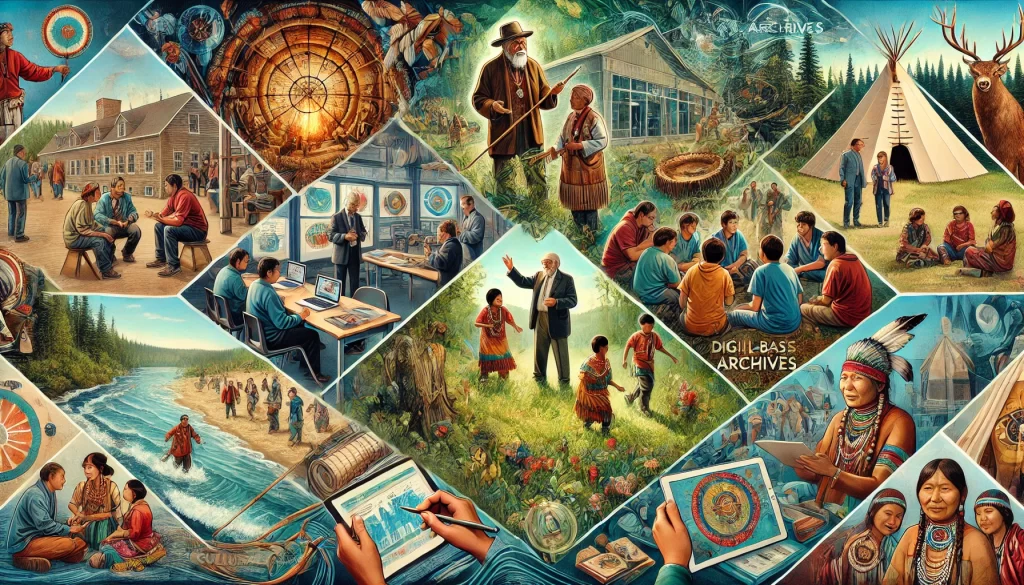
“Our knowledge is meant to be used and shared,” says Robert Wolfsong, an Indigenous education expert. “But it’s important that it’s shared in the right way, with respect for its origins and the communities it comes from.”
Art and Traditional Knowledge: A Beautiful Connection
Indigenous Traditional Knowledge isn’t just practical – it’s also expressed through beautiful art! Here are some ways art and traditional knowledge come together:
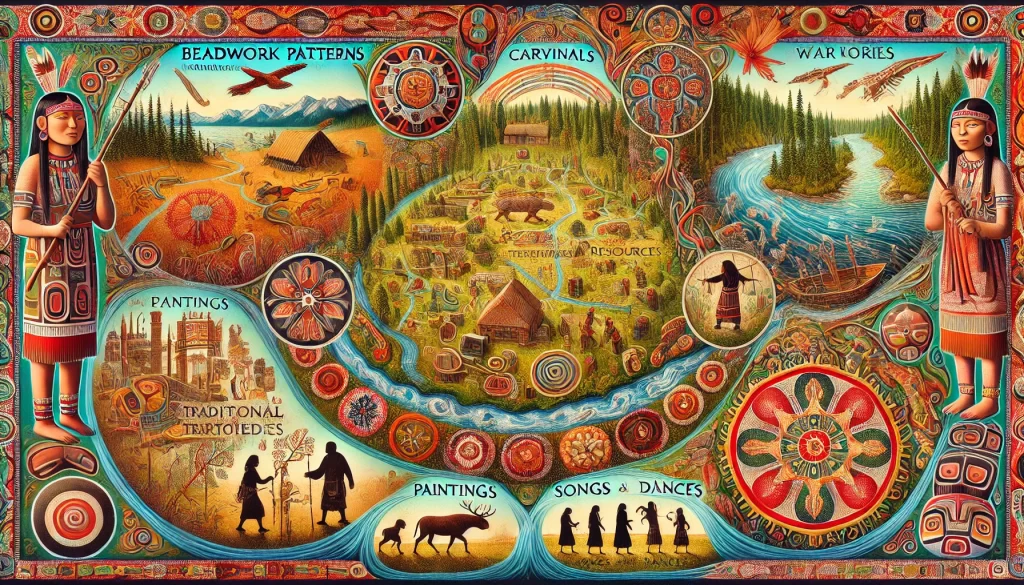
- Beadwork patterns that show medicinal plants
- Carvings that tell star stories
- Paintings that map out traditional territories and resources
- Weavings that display knowledge about animals and their habitats
- Songs and dances that teach about seasonal changes and harvesting times
“Our art is like a colorful textbook,” explains Lisa Morningstar, a Métis artist. “Each piece carries teachings about our relationship with the land, the spirits, and each other. When we create, we’re passing on knowledge in a beautiful way.”
Respecting Indigenous Knowledge
It’s super important to remember that Indigenous Traditional Knowledge is precious and needs to be respected. Here’s how we can all show respect:
- Recognize that Indigenous Peoples are the experts of their own knowledge.
- Understand that some knowledge is sacred or private and not meant to be shared widely.
- If learning about traditional practices, do so from Indigenous teachers or resources.
- Give credit to Indigenous knowledge sources when using or talking about this information.
- Support Indigenous-led projects that protect and promote traditional knowledge.
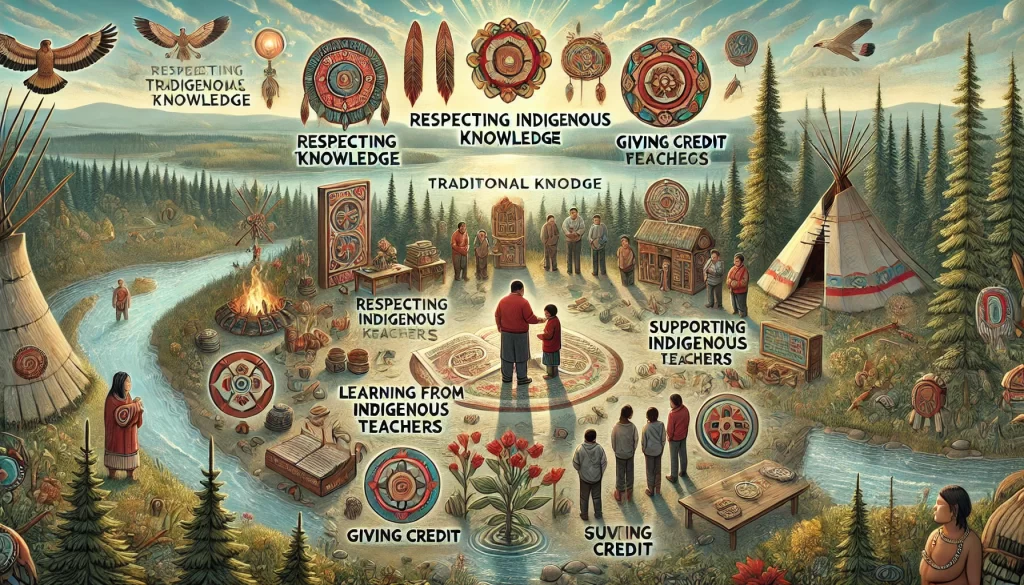
“We’re happy to share our wisdom to help make the world better,” says Elder John Riverstone. “But it’s important that our knowledge is used in a good way, with respect for our cultures and the spirits that guide us.”
Wrapping Up: The Circle of Knowledge
Indigenous Traditional Knowledge is like a circle that connects the past, present, and future. It reminds us that we’re all part of the big family of nature and that there are many different ways of understanding our world. The next time you look at a plant, gaze at the stars, or think about how to take care of our planet, remember that Indigenous Peoples have incredible wisdom to share. By listening and learning with respect, we can all become wiser and find better ways to live in harmony with Mother Earth.
Now it’s your turn! What part of Indigenous Traditional Knowledge interests you the most? Have you ever learned something cool from Indigenous wisdom? Share your thoughts and questions in the comments below. Let’s keep exploring and appreciating the amazing world of Indigenous Knowledge together!
